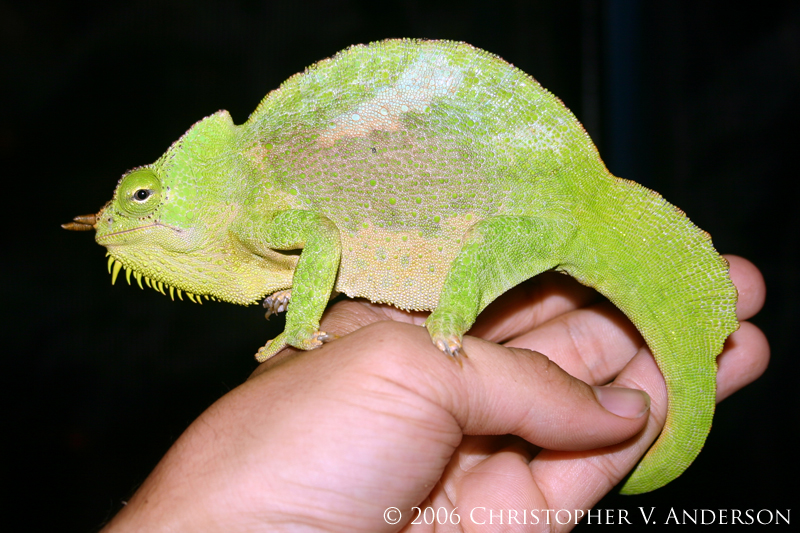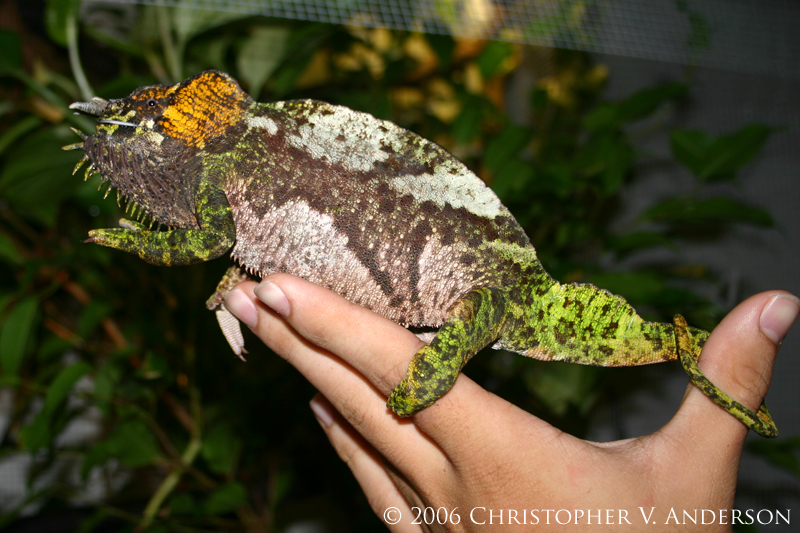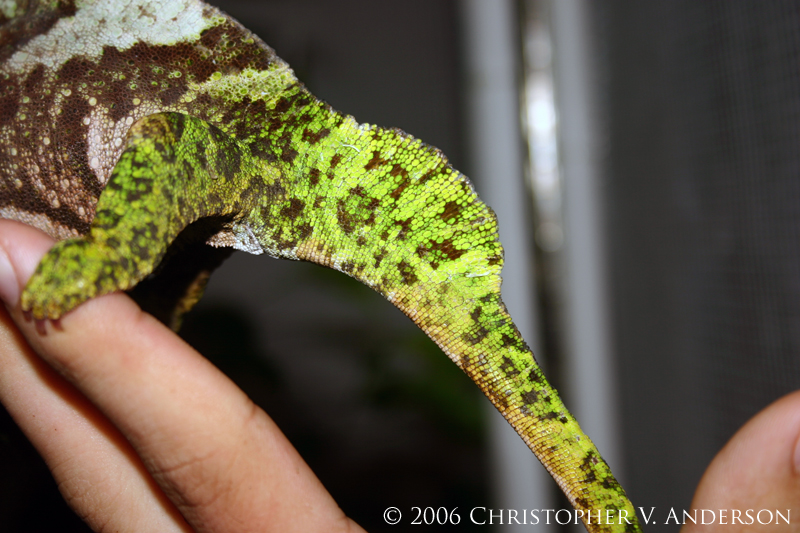Motherlode Chameleon
Chameleon Enthusiast
I have been reading a scientific paper about Trioceros chameleons found in Cameroon and have had a couple questions after reading in regards to taxonomic and current classification of the subspecies of Trioceros quadricornis. Have a look at the article.
http://zfmk.de/BZB/Band_57_2/231-240_17_barej.pdf
This article interestingly list and states that due to low genetic differentiation and similar overall morphology makes three subspecies of Trioceros quadricornis seen as T.quadricornis quadricornis, T. q. gracilior, and lastly T.q. eisentrauti. The inclusion of T. eisentrrauti is interesting enough however my current knowledge or T. q. quadricornis morphological distinction from from the subspecies T.q.gracilior was base on differences in color of the head (Orange head is T.q.gracilior), shape of the dorsal crest and positioning of the horns. However when I checked the pictures listed in this study the one listed as T.q.gracilior has got no signs of an orange head and is listed as T.q.gracilior. Is this orange headed T.quadricornis just a color phase as seen similarly in other chameleons (F. pardalis and F. oustaleti) or is it the T.q.gracilior subspecies? If anyone who has got access to the most updated classification of the subspecies of T.q.quadricornis what officially separates T.q.quadriconris from T.q.gracilior? Thanks!
http://zfmk.de/BZB/Band_57_2/231-240_17_barej.pdf
This article interestingly list and states that due to low genetic differentiation and similar overall morphology makes three subspecies of Trioceros quadricornis seen as T.quadricornis quadricornis, T. q. gracilior, and lastly T.q. eisentrauti. The inclusion of T. eisentrrauti is interesting enough however my current knowledge or T. q. quadricornis morphological distinction from from the subspecies T.q.gracilior was base on differences in color of the head (Orange head is T.q.gracilior), shape of the dorsal crest and positioning of the horns. However when I checked the pictures listed in this study the one listed as T.q.gracilior has got no signs of an orange head and is listed as T.q.gracilior. Is this orange headed T.quadricornis just a color phase as seen similarly in other chameleons (F. pardalis and F. oustaleti) or is it the T.q.gracilior subspecies? If anyone who has got access to the most updated classification of the subspecies of T.q.quadricornis what officially separates T.q.quadriconris from T.q.gracilior? Thanks!
Last edited:







